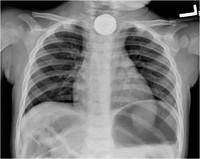This is the second in a four part series on nuclear waste which is running on BraveNewClimate.com over a four-day period, authored by Geoff Russell. Click here for Part 1.
What’s special about nuclear waste?
In Part I, we found that radioactive decay in the earth’s crust is continuously releasing as much energy as 44 million large nuclear reactors. Is that troubling? Presumably not. I’ve not heard calls from anti-nuclear activists like Helen Caldicott or Jim Green to seal the surface of the planet with a layer of lead to save future generations from horrible deformed babies.
So what is it about nuclear power waste disposal that people find so troubling? Dig a hole into that crust and replace some naturally radioactive rock that hasn’t moved for billions of years by the aforementioned waste. Fill and forget. Of all our hazardous waste disposal problems, this is one of the few that’s been properly solved. Others remain unsolved and kill large numbers of people on a daily basis.
What exactly are the differences between the waste-products of nuclear electricity generation and those from other energy sources?
- Nuclear waste quantities are small and contained. A typical reactor produces about 30 tonnes of high level radioactive waste per year. This is fuel rods rendered quite safe by a suitable layer of water. Most long term disposal plans involve melting and mixing the rods with ceramic material of some kind to create a stable compound. After this, the 30 tonnes of rods will occupy just a few cubic meters and there are many ways of disposing of them safely and permanently. More about this later.But a coal plant with a similar electrical output will be producing 400,000 tonnes of coal ash containing variable amounts of arsenic, mercury and chromium. These poisons don’t have half lives, but are toxic forever. They have, just like nuclear fuel, been mined from the earth’s crust but, unlike spent nuclear fuel, they are incredibly hard to collect and return to their source. Compared to coal waste, dealing with nuclear waste is a stroll in the park. (more…)
Filed under: Impacts, Nuclear | 2 Comments »






.png)






